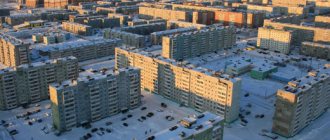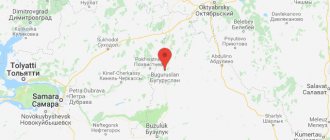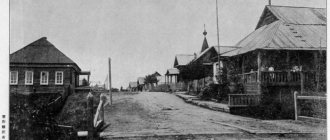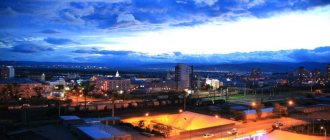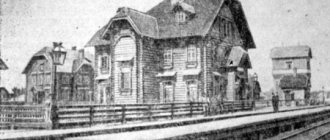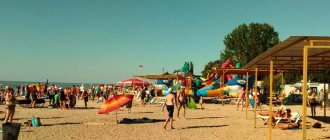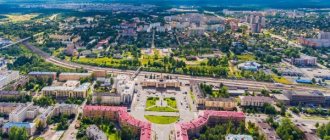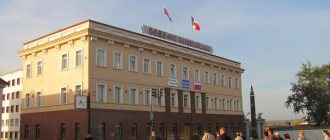- October 12, 2018
- Directions
- Nadezhda Kurchenok
Descriptions of the natural places of Karelia can be found both in paintings and in works of fiction. Having been here once, it is simply impossible to forget it. But the question may arise: is Karelia Russia or not? The republic is part of the Northwestern Federal District of the Russian Federation and borders Finland.
Karelia - where is it?
The subject of the Russian Federation was formed as the Karelian Labor Commune in 1920. But already in 1923 Karelia acquired the status of a republic. In addition to the state (Russian) language, local residents communicate in Vepsian, Finnish and Karelian.
The Republic of Karelia (the country of Russia) is located in the Northern part of Europe. In the northeast it is washed by the White Sea. The area is characterized by hilly plain terrain, which turns into highlands in the west. The highest point is Mount Nuorunen in the northwest. Its height is 576.7 m. The total area of Karelia is 180,520 km².
Main cities with photos and names
The list of the largest cities of the Republic of Karelia includes ten settlements.
Petrozavodsk
It was founded by decree of Peter the Great back in 1703. It is the capital of the republic and the only large city on its territory. Located on the coast of Lake Onega, it has direct access to five seas (through rivers and canals). Population: 279,000 people.
Read about what architectural monuments and natural beauties you can see in the capital here.
Kondopoga
It is located approximately 50 km from Petrozavodsk, on the coast of Lake Onega. The city was first mentioned in 1495 in chronicles. In the 18th century, deposits of ore and marble were discovered, and a hydroelectric power station was built in 1929. The status of a city was assigned to the settlement in 1938. Population: 30,000 people.
Kostomuksha
It is located approximately 30 km from the border with Finland. Initially it was a settlement built near an ore deposit, but in 1983 it received the status of a city. The Kostomuksha Nature Reserve and the Kalevalsky National Park are located on the territory. Population: 29,000 people.
Segezha
It stands on the river of the same name not far from Vygozero. Founded in 1914, it was originally a small railway station on the Murmansk road; in 1943 it received city status. Population: 26,000 people.
Sortavala
The city was founded by the Swedes in 1632 (before that, there had been a Karelian settlement on this territory since approximately the 12th century). Until 1918, the town was called Serdobol. Until 1940 it was administered by Finland.
It is located on the coast of Lake Ladoga and is the only city in the republic that has managed to preserve ancient buildings. It has the status of a historical city. Nearby is the Ruskeala Nature Park and the island of Valaam. Population: 18,000 people.
Read about the sights of Sortavala in this article.
Medvezhyegorsk
Founded in 1916. Until 1938 it was called Bear Mountain (the local railway station is still called that today). It is located 152 kilometers from Petrozavodsk on the northwestern tip of the Bolshaya Bay of the Povenets Bay of Lake Onega. The area of this city is famous for its rich shungite deposits.
In Medvezhyegorsk you can visit the museum of the history of the railway station, a waterfall on the Vichka River, and the defensive fortifications of the Finnish occupation forces “Karkhumaki Castle”. Population: 14,000 people.
Kem
Translated, the name of the city means “Big River”. The settlement was founded in the 14th century and received city status in 1785. Managed to preserve several interesting historical buildings. Population: 11,000 people. Read what interesting things you can see in Kemi and its surroundings here.
Pitkäranta
Until 1940 it was part of Finland, in the same year it officially became a city. Located on the coast of Lake Ladoga. Population: 10,000 people.
Belomorsk
Located at the mouth of the Vyg River. The first mention of the settlement dates back to 1419. It is a major railway and maritime hub. Located near the Solovetsky Islands. Population – 9,600 people.
Suoyarvi
Founded in the 16th century. Until 1940 it was part of Finland. The territory includes the Talvojärvi nature reserve, as well as a network of lakes and swamps. Population – 8,900 people.
Rivers and lakes
The largest rivers in Karelia are the Chirko-Kem, Unga, Onda, Kem and Vodla. There are also beautiful waterfalls on the territory of the republic, for example, Vyg and Kivach. In total, there are about 27 thousand rivers and about 60 thousand lakes in Karelia. By the way, Onega and Ladoga are the largest in Europe. Other large lakes include Vygozero, Topozero, Syamozero, Pyaozero and Nyuk.
Weather and climate
The climate in Karelia is not much different from the climate of most northern regions. Really hot summers are rare, autumns are rainy, and winters are quite cold.
Average temperatures (summer):
- June: during the daytime – +19..+20, at night – +10..+14;
- July: during the daytime – +20..+22, at night – +14..+16;
- August: during the daytime – +20..+22, at night – +13..+15.
Precipitation in summer falls mainly in July–August, but is usually not prolonged. Also, the period from May 26 to July 17 in Karelia is the period of white nights.
Autumn comes to the region strictly according to the calendar - at the end of August-beginning of September. The nights become sharply colder, the rains begin to fall longer (sometimes for several days in a row).
Winter in Karelia is snowy and frosty, as befits the northern region. The coldest month is January. February is a time of heavy snowfalls and strong winds, which, with high humidity, is felt worse than in areas with drier air.
Average temperatures (winter):
- December: during the daytime – -5..-6, at night – -8..-10;
- January: during the daytime – -9..-12, at night – -14..-18;
- February: during the daytime – -10..-13, at night – -15..-16.
Spring in Karelia is as short as autumn. March refers to spring indirectly here - it is another month of winter. Even in April, there is still snow in most regions of the republic. As May approaches, temperatures begin to rise and snow begins to give way to rain, but the danger of frost remains high until summer.
Flora
There are 63 species of mammals living in Karelia. Some of them, for example, the brown long-eared bat, the flying squirrel and the Ladoga ringed seal, are listed in the Red Book. Canadian and European beavers live here. “Non-native” inhabitants: a raccoon dog, which was brought from the Far East; American mink from North America. Here you can also meet a wolf, badger, lynx, bear, roe deer and wild boar.
In addition to animals, there are 285 species of birds in the republic (36 of them are listed in the Red Book). The most commonly seen birds are gulls, ducks, owls, hawks, partridges and hazel grouse.
Hunting and fishing in spring and summer
Hunting in Karelia is organized on the territory of various private lands. These are usually coniferous and mixed forests with abundant undergrowth and small clearings interspersed with swamps and lakes.
You can only go hunting with a huntsman; some recreation centers offer tourists ready-made hunting tours in groups of 5 hunters.
These tours most often take place all year round. In autumn they hunt mainly for wild boar (from a tower or from the approach), red deer and deer (the latter are hunted both in winter and early spring, but most often it is trophy).
Fishing is much easier. Fish are caught almost everywhere, but the most popular are the areas of Lakes Ladoga and Onega. Fishing tours with a guide and the possibility of renting gear are organized for tourists.
You can choose a suitable hotel here:
Fauna
In the south of Karelia spruce and pine forests predominate. Closer to the north, only pine trees are found. It is worth noting that many different berries grow in the republic. For example, in the south these are raspberries, cranberries, blueberries, blueberries and lingonberries, and in the north – currants and strawberries.
To protect nature, two reserves have been created - Kostomuksha and Kivach. Scientific tourism is carried out in the protected area, and natural museums and ecological routes have been created. In addition to nature reserves, three parks have been established in the republic:
- Kalevalsky;
- Paanajärvi;
- Vodlozersky.
Much attention is paid to the state forest fund. One of the richest republics of the Russian Federation in this regard is Karelia, where forest occupies about 85% of the total territory. In total, there are 17 forest districts in the republic.
Mushrooms, berries and forest plants
But Karelia is not only famous for its fauna. Those who like to go mushroom and berry picking will definitely find something to do here.
The most common representatives of the Karelian flora: Scots pine, Karelian spruce, Siberian larch, juniper, lady's slipper, black alder, buckthorn, bird cherry, common hazel, downy birch, warty birch, gray alder, smooth elm, small-leaved linden, maple, aspen.
Mushroom pickers here will be able to profit from the following species:
- White mushroom;
- boletus;
- boletus;
- milk mushroom;
- chanterelles;
- Russula;
- honey mushrooms;
- wave
The first mushrooms usually appear at the end of June, so you can go hunting at this time. But the main species will appear closer to mid-July and will grow until the beginning of September.
But most tourists love Karelia for its berry diversity. The berry picking here begins in July.
Main types of berries:
- cloudberry (beginning of collection - July);
- strawberries (beginning of harvest - July, August);
- blueberries (can be picked in August);
- lingonberries (you can start picking at the end of August);
- cranberries (ripe in September);
- blueberries (can be picked in September).
General information about the Republic of Karelia
Karelia is often called “the land of lakes, rivers and forests.” This part of Russia is rich in reservoirs. In the Karelian environs there are about 60,000 lakes and about 28,000 rivers. And the area of natural forests is about 16 million hectares. When clarifying where the Republic of Karelia is located, it is worth considering that this Russian territory is multinational. According to the census data, the republic includes:
- Russians - 82.3%;
- Karelians - 7.5%;
- Belarusians - 3.9%;
- Ukrainians - 2.1%;
- Finns - 1.5%;
- Vepsians - 0.6%;
- other nationalities - 2.6%.
Karelia is famous for its amazing nature
The indigenous population of Karelia are the Vepsians and Karelians. They have a rich culture, their own language and writing.
Many Russians go on vacation to the lake region to improve their health. It was in this region that the first Russian resort opened (it was opened during the reign of Peter I). Nowadays, many health centers, resorts and sanatoriums are actively operating in the republic. Karelia is famous for the production of unique cosmetics based on shungite, a mineral formation that can only be found in these places.
Location on the map
The Republic of Karelia on the map of Russia is located in the northwestern region of our country. The well-known city of Petrozavodsk serves as a reference point. This is the capital of the region, founded on the shores of Lake Onega. To the west, the republic borders on our northern neighbor - Finland; along the northern borders, its territory is adjacent to the Murmansk region, to the east - to the Arkhangelsk region, and to the south, Karelia is adjacent to the Leningrad region.
Regions of Karelia
Karelia is a huge territory, consisting of two large urban districts, consisting of 16 districts. All of them have quite significant differences in landscape and natural conditions. While the southern regions are actively engaged in growing wheat, the northern parts of the republic border on the tundra strip and have all the climate features of the Far North.
To get a more authentic impression of the “land of lakes and rivers”, it is worth visiting several different regions of Karelia.
Coming to these amazing places, people never cease to be amazed at the unique variability of our northern nature. In Karelia, powerful granite monolithic rocks suddenly change into gentle meadows, which give way to fragrant pine forests with crystal clear air and unusually beautiful bodies of water. Many Karelian regions have the status of “national treasure”. The density of the indigenous population there is very high, and in the settlements you can get acquainted with centuries-old traditions and hear real Karelian speech.
Location of the republic on the map of Russia
Attractions and places to stay
Each of the tourists who have planned a visit to Karelia plans their vacation in their own way. Some go there for treatment and relaxation. Others - in the hope of visiting the sights for which this region is famous. There are also fans of active sports who also find something to their liking here. But mostly they visit these places to admire the unique historical places.
The Church of the Transfiguration is considered the calling card of our northern region. It was founded more than 300 years ago and is located on the island of Kizhi.
Ruskeala Park
This is a fairly new tourism site. The park was erected on the site of a former marble quarry and is the only and unique monument to mining production. It was founded by the joint efforts of Finnish and Russian masters. This place is ideal for a large group holiday or a family outing. In the center of the park there is a unique lake - flooded marble quarries . Moreover, in each of them the water has its own color: in one quarry it is green, and in the other it is pale blue.
Kizhi
The Kizhi Nature Reserve Museum is the largest open-air museum in the Russian Federation. The uniqueness of this place was also recognized by UNESCO - several ancient churches are under the protection of this organization. The unusual museum complex includes huts, mills, churches, and forges. The main (central) church in Kizhi was founded in 1714. Over the centuries, the architecture of church architecture has remained untouched - the churches still have wooden domes and graveyards.
Each church in Kizhi is an original Russian heritage of Orthodoxy and was built without the slightest influence from other cultures.
It is not for nothing that this monument of ancient Orthodox architecture is considered a striking example of the preservation of ancient traditions. More than 180,000 tourists from all over the world visit Kizhi every year. The island is located on the calm Lake Onega. By the way, the very first mention of Kizhi was discovered by historians in chronicles and legends of the 15th century. Kizhi attracts with its amazing originality and magical ancient beauty.
Kizhi Island
Balaam
And on the shore of another Karelian lake, Ladoga, there is another unique Karelian shrine. This is the Valaam island monastery. The monastery is located far from the bustle of the world, noisy cities and settlements. The history of the famous Valaam Monastery goes back to the distant 10th century. Novices and monks sacredly guard unique manuscripts, icons and other Christian shrines.
The Valaam Monastery is active and is home to about 150 monks, who receive more than 2,000 tourists annually.
Kivach
Karelia is also famous for its unique large museum Kivach, dedicated to the peculiarities of the local fauna and flora. The total territory of the reserve museum-reserve is about 12 hectares. The museum complex consists of two halls:
- A hall dedicated to the plant world.
- Pavilion telling about the Karelian fauna.
The famous Kivach waterfall (near the city of Kondopoga) is also located on the territory of the museum. This is a flat waterfall that originates from the Suna River. Tourists traveling around Kareli on their own can stay at the comfortable recreation center “Kivach” on the coast of Lake Sandal with crystal clear water.
Weather
The climate of Karelia is quite mild, but with plenty of precipitation. It changes from temperate continental to maritime. The variability of climatic conditions is influenced by the close location of the White Sea. The winter period is quite snowy and cool, but without severe frosts (severe cold usually, if it occurs, lasts only a few days). Summer is also cool with rare hot days.
It is much warmer in the southern regions of the republic - there the average monthly summer temperature is +20–25⁰С. In the northern part, hot weather is rare, but sometimes pampers local residents. The volume of atmospheric precipitation increases in the north-south direction and has indicators of 550–800 mm.
Kivach waterfall
Travel route from Moscow and St. Petersburg
You can get to Karelia in several ways:
- By plane. Flights are accepted at Besovets Airport in Petrozavodsk. The schedule varies from season to season.
- By train. If you are coming from Moscow, then the easiest way is to take the Murmansk train No. 092 or the branded Karelian train No. 18. Both arrive in Petrozavodsk. But Lastochka trains run from St. Petersburg to Petrozavodsk and Sortavala. There is a night train No. 011, but the comfort of the cars here leaves much to be desired.
- By car. The P-21 “Kola” highway leads from St. Petersburg to Petrozavodsk. You can get from Moscow to Karelia along the M-11 highway, from which you will also need to turn to Kola.
Detailed information on how to get to Karelia by car and a Google map with a description of the trip can be found here for Muscovites, and here for residents of the northern capital. Read about independent travel to Petrozavodsk using all types of transport in this article.
You can view the flight schedule here:
How to get to Karelia
The central Karelian airport is located in the vicinity of the capital of the region - Petrozavodsk, at a distance of 12 km from the city. This is an international airport that annually receives a large number of tourists both from Russia and from other countries.
It will take about an hour and a half to fly to Karelia from Moscow. The airport also has helipads.
By the way, there are landing spots for helicopters even in sparsely populated areas of the republic. You can also get to unique places by train. The railway line runs along the Karelian Isthmus, and along the way passengers can admire the beauty of the White Sea.
The republic has well-developed bus services. You can take a tourist flight from various Russian cities: Novgorod, St. Petersburg, Vologda, etc. If you want to travel on your own, Muscovites should know that the distance from Moscow to Karelia is 1,017 km along the highway, and 695 km in a straight line. The main road - highway M18 (St. Petersburg - Murmansk) has excellent coverage. But secondary roads, especially in remote places, are bumpy.

